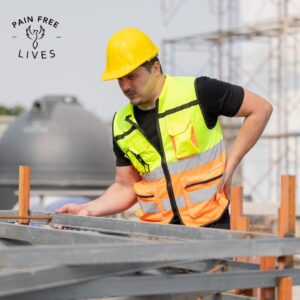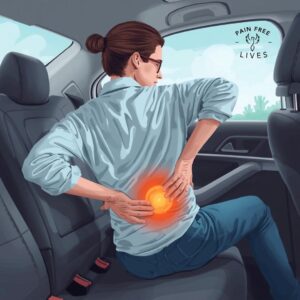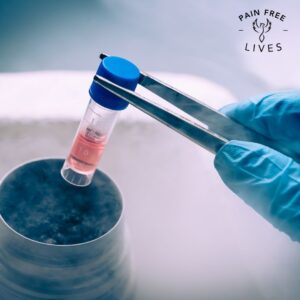The Problem with “Surgery-First” Thinking
For far too long, the default mindset in musculoskeletal care has been to race toward surgical intervention. Many patients are told early on that surgery is inevitable—as if their pain story ends with a scalpel and a few months of rehab. But that approach often skips essential steps. It overlooks the complexity of pain, how the body responds to conservative treatment, and the long-term risks that surgery can carry. At Pain Free Lives, we challenge that thinking. We believe in starting with the least invasive, most strategic option first. And more often than people realize, that option works.
What “Non-Surgical First” Really Means
Saying “non-surgical first” doesn’t mean we oppose surgery—it means we don’t treat it as a shortcut. Our approach begins with a full-body understanding of why pain is happening, how it’s affecting movement, and what the safest path forward looks like. Instead of jumping to a surgical consult based on one MRI or a vague diagnosis, we look at function, muscle activation, posture, and stability. We factor in the patient’s goals, age, activity level, and daily routines. Then, we build a treatment plan that strengthens what’s weak, calms what’s inflamed, and restores what’s out of balance—without cutting into the body unless necessary.
Pain Is Functional, Not Just Structural
One of the most misunderstood aspects of pain is that it isn’t always about a tear, a bulge, or an X-ray finding. Plenty of people walk around with “degenerative changes” in their spine or joints and feel no symptoms. Others have intense, persistent pain but show no visible damage on imaging. That’s because pain isn’t just structural—it’s deeply functional. It involves movement patterns, inflammation cycles, neural sensitivity, and often the cumulative stress of years of compensation. Non-surgical care gives us the space to look at pain through that lens and intervene before it escalates into something that requires the operating room.
The Role of Regenerative Medicine in Modern Care
Advances in regenerative medicine have completely reshaped how we manage joint and spine issues without surgery. At Pain Free Lives, we use treatments like Platelet-Rich Plasma (PRP) and Bone Marrow Aspirate Concentrate (BMAC) to support tissue repair and reduce inflammation at the source. These aren’t alternative therapies—they’re evidence-backed interventions performed with medical precision. When used correctly, regenerative treatments can delay or even eliminate the need for surgical procedures like joint replacements or spinal fusion. For patients who want to stay active, avoid general anesthesia, and preserve their natural anatomy, this is a powerful first-line option.
Why “Alternative Only” Isn’t Enough
While we advocate for non-surgical care, we never position ourselves as an “alternative-only” clinic—and there’s an important reason for that. The word “alternative” often carries a tone of opposition to mainstream medicine. Surgery isn’t the enemy. Sometimes it’s the right decision—but only after we’ve exhausted the conservative options, gathered accurate diagnostics, and confirmed that nothing else will restore quality of life safely. Saying “alternative only” would be intellectually dishonest and potentially harmful to our patients. Our role is to explore every medically sound option—not to choose sides.
When Surgery Makes Sense
There are moments when surgery is appropriate, and we know how to recognize them. If a patient has severe neurological deficits, progressive weakness, or damage that clearly won’t respond to conservative care, we don’t hesitate to recommend surgical evaluation. But the key is that those decisions come from a place of careful assessment—not panic or pressure. And even when surgery becomes necessary, our non-surgical support doesn’t end. We work closely with surgical teams and guide patients through pre-and post-operative recovery to improve healing, reduce scar tissue formation, and rebuild function faster. Surgery, when done at the right time, can be part of a highly successful recovery plan. But it should never be the starting point by default.
Avoiding One-Size-Fits-All Solutions
Every patient who walks through our door is different. Their pain is different. Their history, goals, and physiology are different. That’s why we avoid templated treatments or cookie-cutter programs. Non-surgical care works best when it’s personalized—and when we tailor a combination of movement retraining, regenerative therapy, and supportive care based on a clear picture of what’s really going on. We’re not interested in trendy treatments or one-off injections without a plan. We’re interested in outcomes that last—not just quick relief.
Education Is the Foundation of Healing
A major part of what we do at Pain Free Lives is education. We spend time explaining options. We talk through timelines. We clarify expectations. Many of our patients tell us no one has ever walked them through their pain before—just handed them a prescription or a referral. But we believe that informed patients make better decisions, recover faster, and feel more in control of their health. We’re here to answer questions—not just treat conditions. That’s why our philosophy includes transparency, choice, and collaboration at every step.
The Real Goal: Function, Not Just Pain Relief
It’s easy to chase pain relief. But what matters more is function—what you can do, how you move, how you feel day to day. Some treatments reduce pain but don’t restore strength. Others stabilize a joint but reduce the range of motion. Our focus is on integrated care that does both. We want you walking farther, lifting easier, playing longer, or sleeping better. Non-surgical care gives us the tools to pursue that full-circle recovery without sacrificing safety or pushing past your body’s readiness.
A Smarter Way Forward
Ultimately, our philosophy comes down to this: the smartest care is the most complete care. Non-surgical first means we respect the body’s ability to heal. It means we use science, not shortcuts. It means we treat people, not images. But it doesn’t mean we ignore reality. If surgery is the best way forward, we’ll help you get there—armed with strength, stability, and support that starts before the first incision and continues long after the last stitch.
We’re not here to sell hope. We’re here to build it, with you, and for you.








